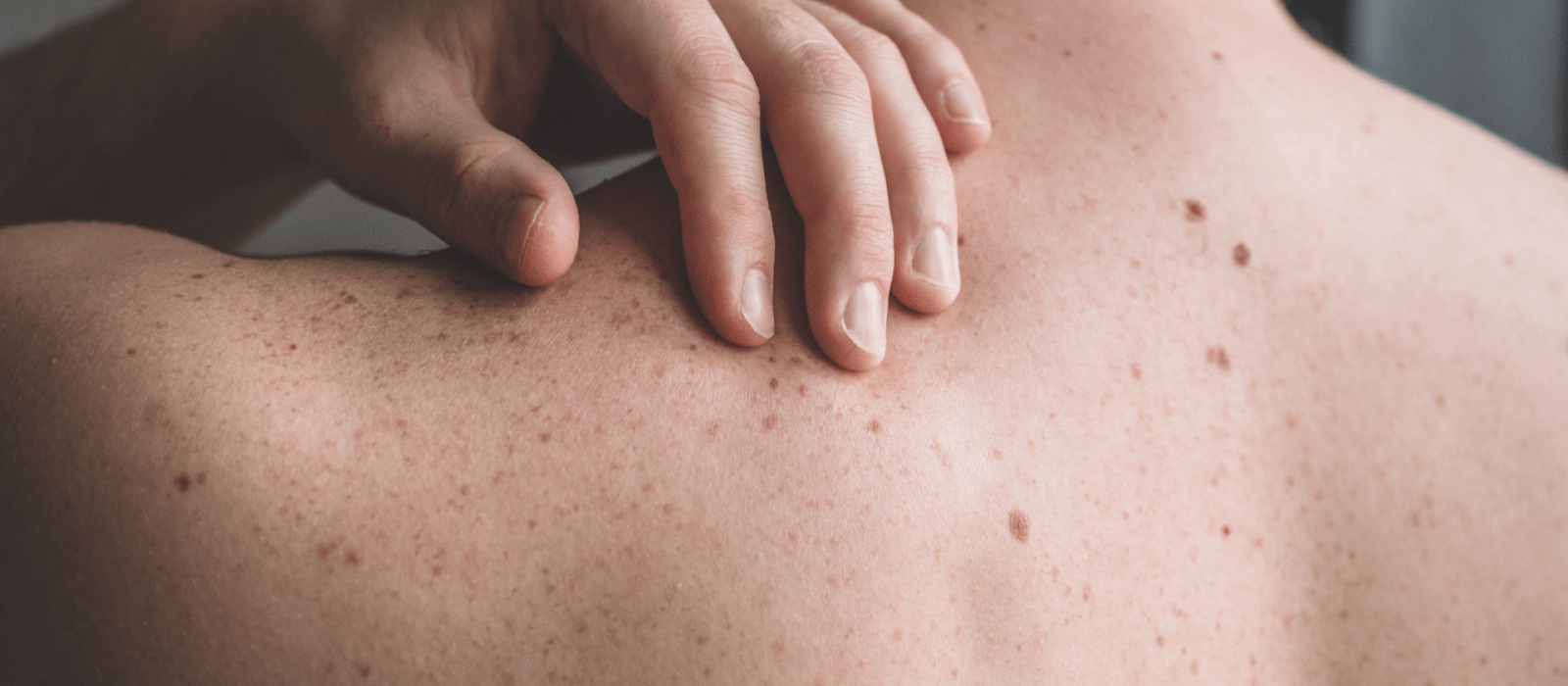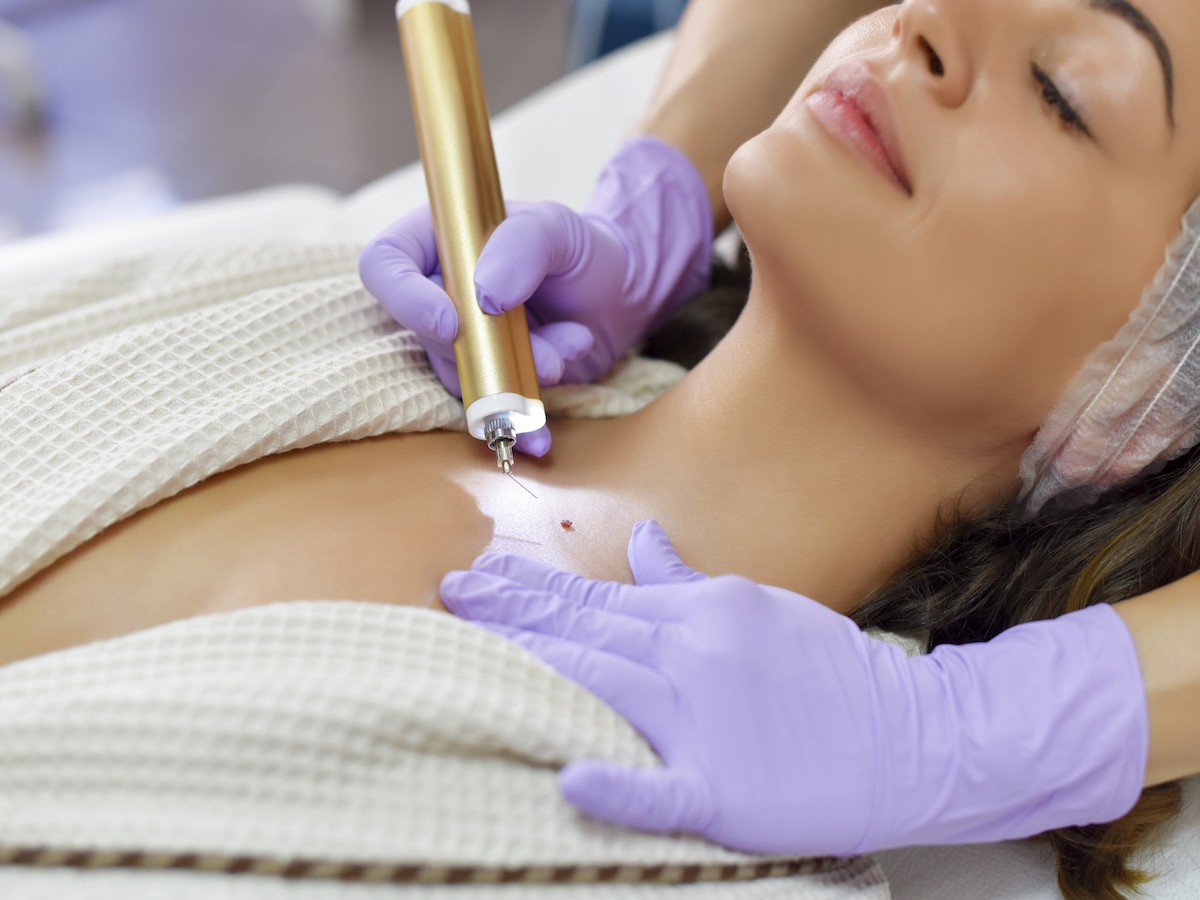About Moles
Moles are common, pigmented growths on the skin. They appear as small, dark brown spots and may be flat or raised. Moles generally appear during childhood and adolescence. Most moles are harmless, or benign growths. Moles are also referred to as Nevi.
CAUSES
Moles are developed when cells that produce pigment, known as melanocytes, grow in clusters or clumps. Melanin is what gives color to your skin.
RISK FACTORS
Almost every adult has at least a few moles. Most people have a common mole, which is a harmless type. There are other types of
moles. Some things increase a person’s risk for getting melanoma, a type of skin cancer.
Some of these include:
• Family history of moles
• Having moles present at birth increase the chances of developing more moles
• Excess sun exposure, such as sunburn
There are also different types of moles that are known to be more susceptible to develop into melanoma.
These types are:
Atypical (Dysplastic) Moles:
• Larger than an eraser on the end of a pencil.
• Have an odd shape (not round).
• Show more than 1 color — mixes of tan, brown, red, and pink.
• Can appear anywhere on the body.
• Can run in families.
Congenital Moles:
• Present at birth (roughly 1 out of 100 people are born with moles).
• Can be any size.
• If moles begin to grow, they should be checked by a dermatologist and may need to be removed.
Spitz Nevus:
• Often appears as pink, raised, and dome-shaped.
• May have different colors within it.
• Usually develop within the first 20 years of life.
Acquired Moles:
• Moles that develop after birth.
• Having 50 or more puts you at greater risk.
Never try to shave off a mole at home:
• If the mole contains skin cancer, some of the cancer cells can stay in the skin — and even spread.
• You can disfigure your skin, causing a scar or other permanent reminder.
• You can cause an infection.
SYMPTOMS
Most people have at least a few moles on their body. A mole on your body has these traits:
• One color – Often brown, but a mole can be tan, black, red, pink, blue, skin-toned, or colorless.
• Round in shape.
• Flat or slightly raised.
• Looks the same from month to month.
Your moles may not look alike. Even in the same person, moles can differ in size, shape, or color. Moles can have hair. Some moles will change slowly over time, possibly even disappearing.
Moles can appear anywhere on the skin. Moles develop on the scalp, between the fingers and toes, on the soles and palms, and even
under the nails.
DIAGNOSIS
A dermatologist can usually tell just from looking whether or not a spot is a mole or not. Sometimes a biopsy may be required to determine if something else is present. It is important to have a yearly skin exam so that your dermatologist can detect any potential changes in your moles.
FAQs
Can you prevent moles or are they hereditary?
Mole development is mostly determined by genes. Some families are more prone to developing them either from birth, or later in life. Preventing moles from developing is, therefore, very difficult. Sun exposure does, however, play a role, and it is thought that excessive exposure to the sun can promote the development of moles. Although sunscreens will be unlikely to completely prevent the development of moles, they are very important in preventing sun damage, which can lead to skin cancers, a far worse problem compared to moles.
Are moles dangerous in any way?
No, true moles are not dangerous. Unless they are irritated or stick to clothing, there isn’t any reason to remove them, outside of cosmetic concerns. The only concern is that moles can resemble melanoma at its early stage, and that melanoma can develop inside the moles. In its early stages, melanoma can resemble the surrounding moles, which can delay diagnosis. Although dermatologists can diagnose melanoma, patients will need to be educated enough to be concerned and visit a dermatologist first.
How do I distinguish between moles and melanoma?
The ABCDEs are warning signs of melanoma, and demarcate melanoma from harmless moles. Note that not all melanomas will show
all 5 signs. These are all signs that point out a mole may be suspicious. If notice any of these signs, visit a doctor and have your mole
checked.
• A: Asymmetry in the skin lesion – color, shape and borders are various
• B: Border that is irregular – with boundaries that are unclear
• C: Color – multiple colors often with some faded areas
• D: Diameter – moles are not very likely to grow larger than 6mm
• E: Evolving – constant change of the lesion, especially noticeable enlarging
Should I remove all my moles to be safe?
This is usually not an option that is reasonable, considering the average number of moles that people will have. It is very common for
people to have 30 to 50 moles. Removal requires time, money, and will often leave minor scarring. Melanomas are dangerous and we
would all do well to watch out for warning signs, but there is no need to be paranoid about them. Checking your moles with a mirror or
having a partner check your moles once a month would greatly reduce the risk of missing a melanoma until it has grown dangerous.
What should I do with my moles from a medical standpoint?
Most moles are best left alone. They are not dangerous, and are rarely too problematic from a cosmetic standpoint either. Many cultures find beauty spots to be a pleasing feature.
Is mole removal covered under medical insurance?
With certain exceptions, mole removal is considered to be a cosmetic/elective procedure, and is therefore not covered under medical insurance. If there is a concern that the mole may be malignant or that it may be a skin cancer, the removal procedure will be considered medical, and thus covered by most insurance policies. This is a general guideline, however, and every policy is different. For specifics, you should check your specific policy to see if it is covered.
Are there any risks involved in mole removal?
Mole removal procedures are generally safe procedures. As with any surgical procedure, some amount of scarring is to be expected, as are minor pain and redness. These are to be expected. In terms of unwanted side-effects, infections and allergic reactions to the anesthetic is a possible risk although these are both rather remote possibilities.
Visit Virginia Dermatology & Skin Cancer Center
Our team provides thoughtful, expert care for all your general, surgical and cosmetic dermatological needs. We are proud to offer the most advanced dermatological services in Norfolk, Suffolk, Newport News, and surrounding areas.
Source: American Academy of Dermatology


